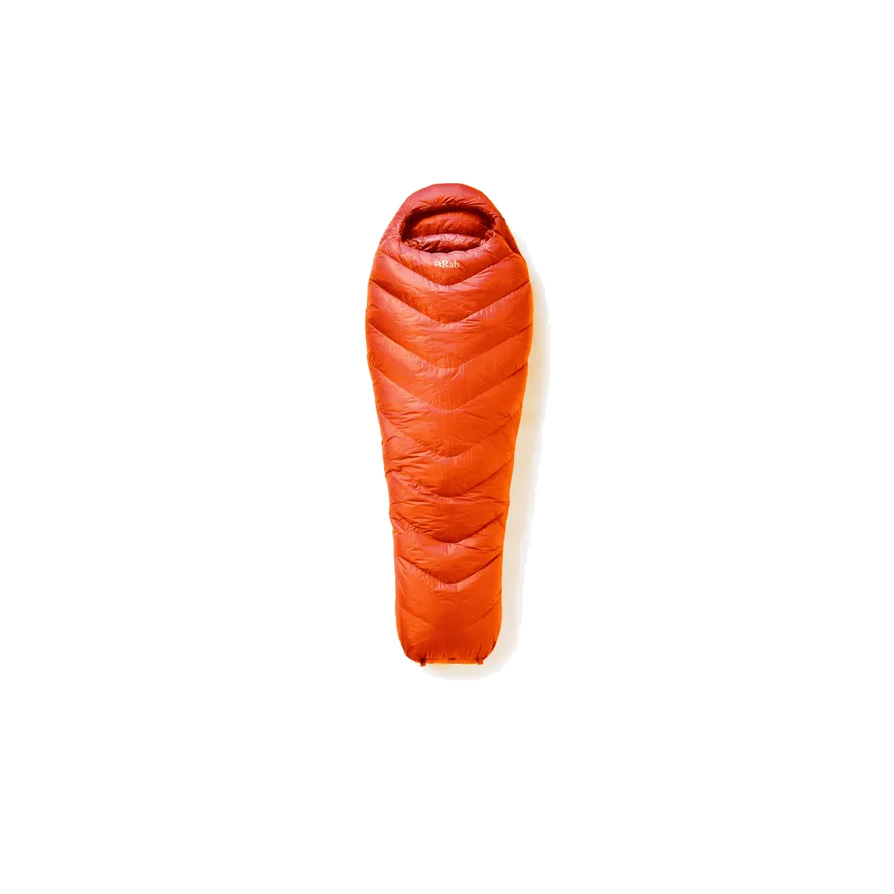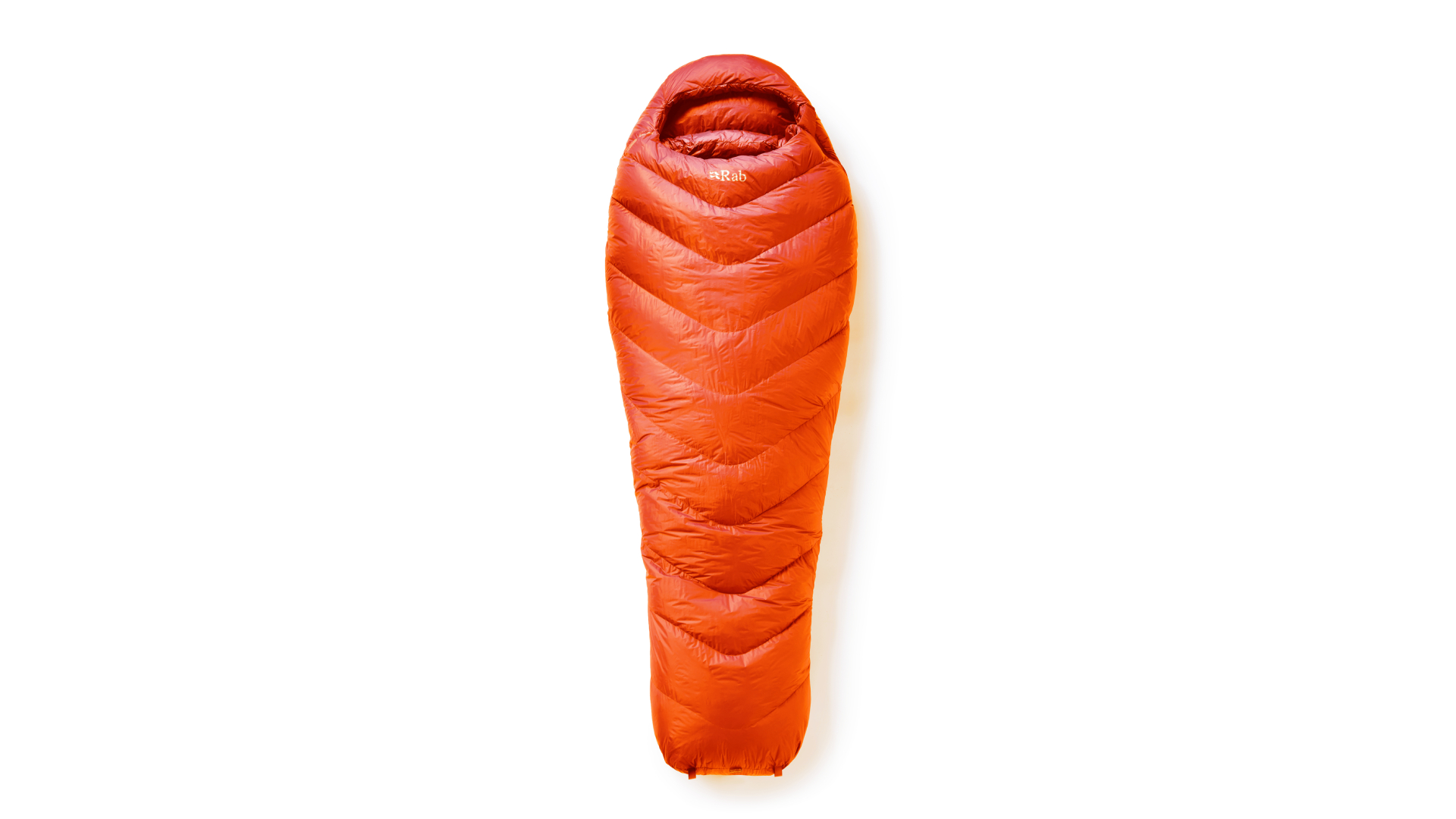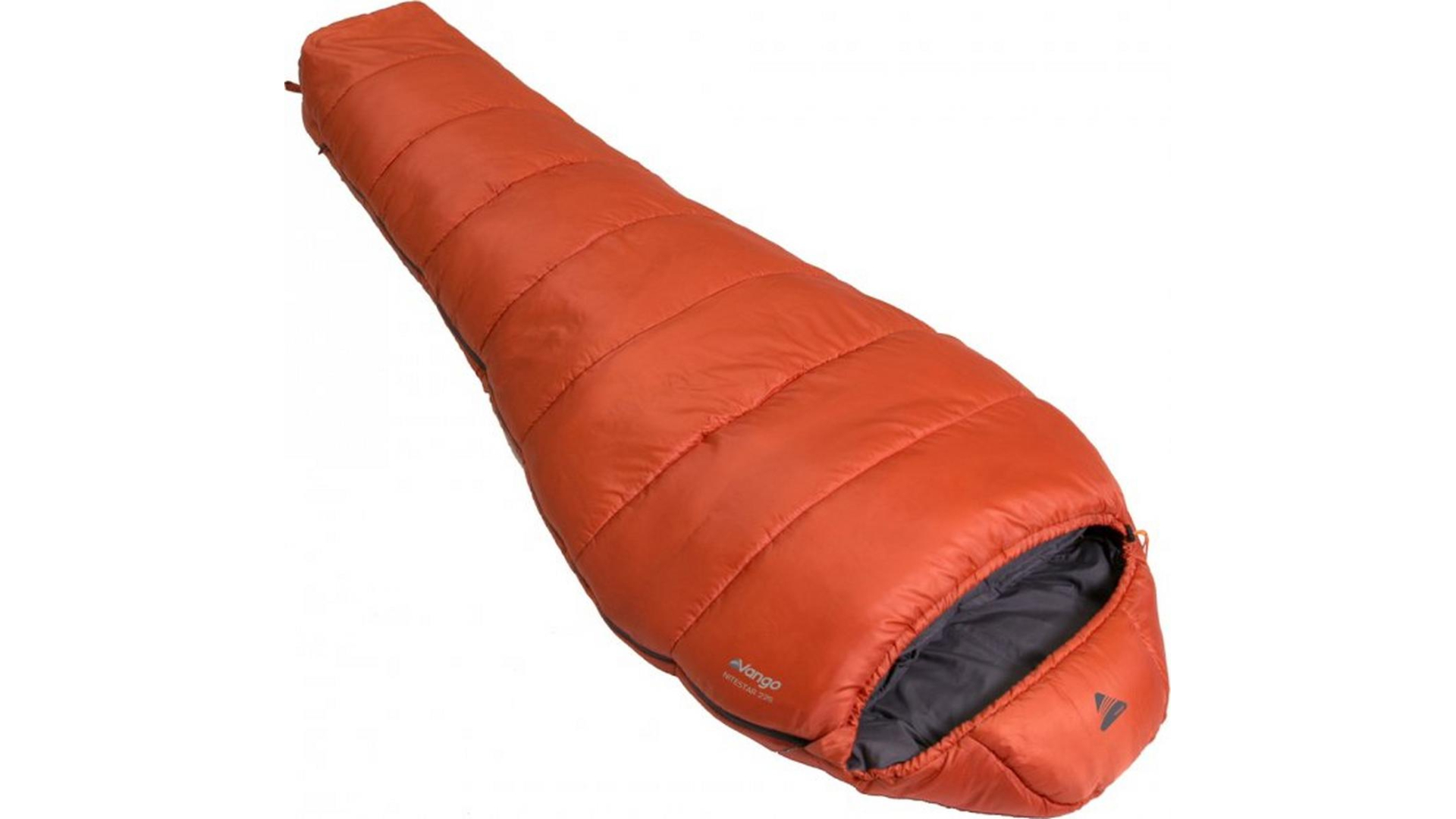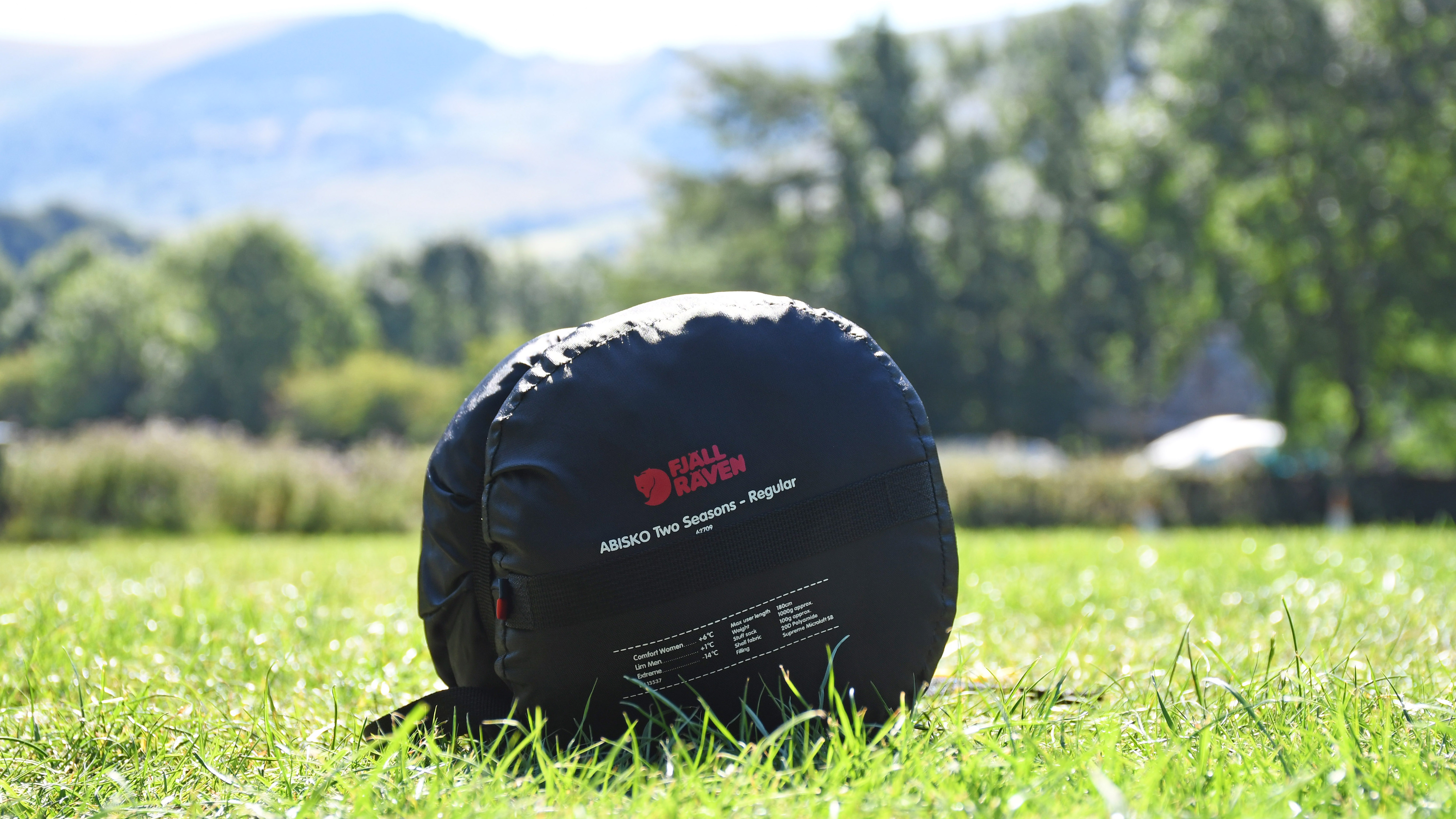The best 2-season sleeping bags: for warm weather camping adventures
Our selection of the best 2-season sleeping bags reveals superb lightweight down and synthetic bags for your camping trips in the warmer months

With summer just around the corner, now is the time to get yourself one of the best 2-season sleeping bags. Lightweight, packable and ridiculously cozy, the excellent sleeping bags in this guide are ideal for summer car camping trips and backpacking missions.
Our expert reviewers have taken the best down-filled and synthetic 2-season sleeping bags into the backcountry to test them to the max. The result is this eight-strong guide the the very finest, with four lightweight down options and four superb synthetic bags.
As is always the case with the best sleeping bags, the choice between down vs synthetic insulation will come down to planned use, budget and personal ethics. Where down in concerned, we adore the ultralight Rab Neutrino 200, while we rate the Fjällräven Abisko as the finest synthetic 2-season bag.
The quick list
This is the quick list, a snapshot of the best 2-season sleeping bags available in 2025. To delve deeper into the features and qualities of each featured bag, see our more detailed reviews further down the page in this guide.

We adore this extremely lightweight, down filled luxury 2-season sleeping bag for mountain missions

A lightweight, down-filled 2-season sleeping bag that we think delivers welcome warmth for summer adventures

We loved how this blissful duck down sleeping bag designed for mountain expeditions kept us warm and snug

We're fans of this top quality down 2-season sleeping bag with a more relaxed, mummy shape that compresses to a small ball, and unfurls for very impressive warmth

We're fans of this lightweight, synthetic-filled sleeping bag for fair-weather bike and backpacking adventures

We like the tough construction of this full-length zipped, durably built, synthetic filled sleeping bag for summer expeditions

Optimised for exotic travel, we approve of this warm, compact sleeping bag has an in-built mosquito net and anti-bacterial fabrics

With a compelling combination of compact pack size and excellent warmth, and all for a killer price, we're big fans of the Nitestar Alpha 255
The best 2-season sleeping bags 2025
You can trust Advnture
The best 2-season sleeping bag overall

1. Rab Neutrino 200
Specifications
Reasons to buy
Reasons to avoid
Down is the perfect insulator – super light and super warm. It’s flaw, however, is that if it gets wet it loses its ‘loft’, the air between feathers, which ruins the insulation. To overcome this, the Rab Neutrino 200 uses hydrophobic down, which keeps much of its loft in damp conditions. Further protection comes in the durable water repellent coating on the Pertex Quantum shell to fend off light rain.
The result is a snug sleeping bag with cleverly designed baffle chambers to keep the down in place and avoid cold spots. The mummy design is particularly close fitting at the neck to trap heat, while the zip runs half the length of the bag to spill warmth on hotter evenings. Shape-wise, the Neutrino tapers from wide at the shoulders to narrow at the ankles, with an angled foot box to ease foot claustrophobia. Our expert tester Jonathan Manning went on to report that there were "other neat touches, including a compression sack for adventures, and a looser cotton storage sack, so the down can relax between trips".
The best value 2-season down sleeping bag

2. Marmot Always Summer
Specifications
Reasons to buy
Reasons to avoid
More generous dimensions and lofty insulation make the Marmot Always Summer a "serious contender for a warm-weather sleeping bag" according to our expert reviewer Jonathan Manning. When the mercury is high, a second, small zip opposite the main zip lets you fold down the covers to chest level, while the full-length two-way zip lets you open the bag from the foot up. But when Jack Frost nips at your toes, a drawcord at the neck traps heat inside the bag and keeps draughts out.
Aware that campers first feel the cold in their feet, Marmot has designed a pouch for a heater in the footbox, which is noticeably roomier than many mummy-shaped rivals. The minimum ‘comfort’ temperature of the Always Summer is slightly higher than other sleeping bags in this review, but strategically-placed baffles keep the down in place while a draft tube stops heat escaping through the zip. Plus, if conditions do get damp, the down is treated to give it some water resistance and maintain its insulation.
The best 2-season sleeping bag for altitude

3. Mountain Equipment Glacier 300
Specifications
Reasons to buy
Reasons to avoid
Ethically-sourced duck down (Down Codex approved) with a minimum fill power of 700 means you can sleep with a clear conscience in the toasty warmth of the Mountain Equipment Glacier 300. According to our camping expert Jonathan Manning, "the Drilite shell fabric does a good job of keeping the down dry, while the trapezoid-shaped baffles eliminate cold spots, adopting different designs for front and back for maximum heat retention".
The full-length zip locks closed with magnets to stop drafts sneaking in during the night, and left- and right-hand zip options let you zip two Glaciers together for a more intimate evening. At the foot of the bag, Mountain Equipment’s Sharks Toe foot construction (from side profile it looks like the nose of a great white) keeps your tootsies toasty when temperatures tumble – this is a bag created for high altitude use.
The best 2-season sleeping bag for warmth

4. Sea to Summit Ascent 1
Specifications
Reasons to buy
Reasons to avoid
For some campers, lying in a mummy-shaped sleeping bag feels like being wrapped in the unbearably tight bandages of an original Egyptian mummy, preventing a comfortable sleeping position. The Sea to Summit Ascent 1 avoids this by being far more generous in its dimensions – its shoulders, for example, are about 77.5cm/30.5in wide (155cm/61in circumference) compared to 70cm/27.5in for the Rab Neutrino 2, and its footbox has a circumference of 122cm/48in (about 82cm/32in for the Rab).
"The genius of the design is that it achieves this extra space without significantly increasing its pack size," says our camping expert Jonathan Manning. A three-zip system offers maximum flexibility – undo the right side to fold back the top third in warm weather, unzip the full-length, two-way left zip for ease of entry and ventilation; and unzip the foot zip to create a quilt. Alternatively, cinch up the hood to trap heat, secure in the knowledge that the responsibly-sourced 750+ down fill insulation will keep you toasty warm in temperatures as low as 2°C.
The best 2-season synthetic sleeping bag

Specifications
Reasons to buy
Reasons to avoid
The Abisko is wonderfully lightweight and blessedly compact, especially for a bag filled with synthetic insulation. Liberated from its stuff sack, it fluffs up pleasantly and gives that all-important thermal lift for summery camps. The hood is easy to adjust, which is always important on those warmer nights. It's definitely a 2-season bag, so don't be tempted to take it out in winter. However, for summer, late spring and early fall, it's a great choice.
The women’s specific version has additional padding and a comfort rating that goes down to 3°C. As well as this, the bag is also available in a longer version, which will suit taller adventurers. According to our camping expert Pat, "the Abisko is nicely designed, with a full-length two-way zip, which means you can ventilate your feet (or other body bits) if you get too hot in the night". The foot box is generous, and there’s a padded flap around the entry to keep cold drafts out. As this is a synthetic bag, it's pretty quick drying and features two eyelets for easy hanging.
Read our full Fjällräven Abisko Two Seasons sleeping bag review
The best 2-season bag for low maintenance

6. Deuter Orbit 0°
Specifications
Reasons to buy
Reasons to avoid
The well-built Deuter Orbit 0° is ideal for campers who want a durable, low maintenance sleeping bag. Its rustle-free shell is impregnated with a dirt and water repellent finish to help keep it clean and to keep the generous high-loft, synthetic filling dry. A full length zip means the sleeping bag can be transformed into a duvet – ideal for wrapping over shoulders as a blanket if you’re sat around a campfire, or for use in children’s sleepovers at home.
"But make no mistake," says our expert reviewer Jonathan manning: "this is a high performing summer sleeping bag, comfortable in temperatures as low as 5°C (41°F)". Welcome features include a strip to stop the zip from snagging and a compression sack that makes it easier to squeeze the sleeping bag into a rucksack. Its pack-down size is significantly bigger than down-filled rivals, but at half to one-third of the price, it’s much lighter on your wallet.
The best 2-season synthetic bag for the tropics

7. Snugpak Travelpak 2
Specifications
Reasons to buy
Reasons to avoid
"If the classic game of Top Trumps had a sleeping bag version it would be hard to beat the Snugpak Travelpak 2’s card" according to our expert tester Jonathan Manning. Its ultra-compact packdown dimensions, excellent warmth and bonus features would make the Travelpak 2 something of an ace in the pack. The fabric is treated with Paratex, an antimicrobial finish that combats bacteria to keep the bag clean and smelling fresh. Then there’s the mosquito net that zips in place to keep biting blighters out of the sack at night (and snakes and bugs out of the sack during the day).
Just roll the net away when you don’t need it. And as for its primary function, the Travelpak 2 is rated comfortable right down to just 2°C, aided by good insulation, baffles to insulate both the two-way zip and shoulders, and a hood drawcord to trap as much heat as possible inside the bag. All in all, one of the best 2-season sleeping bags out there for buyers on a budget.
The best value 2-season sleeping bag

8. Vango Nitestar Alpha 225
Specifications
Reasons to buy
Reasons to avoid
The tapered, mummy-shape Vango Nitestar Alpha 225 may be recommended by the Scouts and Duke of Edinburgh Award schemes. However, our camping expert Jonathan Manning thinks "it would be a shame to confine its use to kids". This is one of the heaviest sleeping bags on review, but its packed size is impressively small, its temperature rating is impressively warm and its price is hard to argue with.
The brushed microfiber lining is lovely and soft next to the skin, while offset seams are designed to avoid cold spots. The same thought has gone into the insulated baffle that runs the length of the zip, trapping heat within the bag, as does the adjustable shoulder baffle. The snag-free, two-way zip locks in place, so it won’t undo while you’re asleep. And in-between camping expeditions, handily placed loops make it easy to hang up on a hook to air.
The best 2-season sleeping bags comparison table
Sleeping bag | List price | Weight | Style | Best use |
Rab Neutrino 200 | $305 (US) / £250 (UK) | 579g / 20oz | Goose down sleeping bag | Fastpacking, bike packing, wild camping |
Marmot Always Summer | $202 (US) / £195 (UK) | Regular 760g/26.8oz; Long 850g/30oz | 650-fill down sleeping bag | Backpacking, bikepacking, wild camping |
Mountain Equipment Glacier | $430 (US) / £280 (UK) | Regular 820g / 28.9oz; Long 830g/29.3oz | 700-fill down sleeping bag | Backpacking, bikepacking, wild camping |
Sea to Summit Ascent 1 | $349 (US) / £330 (UK) | Regular 860g/30.3oz; Long 930g/32.8oz | 750-fill down sleeping bag | Backpacking, bikepacking, wild camping |
Fjällräven Abisko two-season sleeping bag | $160 (US) / £150 (UK) | 1000g / 35oz | Synthetic sleeping bag | Backpacking, wild camping, car camping |
Deuter Orbit 0º | $123 (US) / £100 (UK) | 1400g/49oz | Synthetic sleeping bag | Backpacking, wild camping, car camping |
Snugpak Travelpak 2 | $59 (US) / £45 (UK) | 1100g/39oz | Synthetic sleeping bag | Backpacking, wild camping, car camping |
Vango Nitestar Alpha 225 | £40 (UK) | 1550g/54.7oz | Synthetic sleeping bag | Backpacking, wild camping, car camping |
How we test the best 2-season sleeping bags
At Advnture we endeavor to test every product we feature extensively in the field. That means one of our team of reviewers and writers – all experienced outdoor specialists active across the US, UK, Europe and Australasia – taking it out into the terrain and climatic conditions that it’s designed for. If, for any reason, this isn’t possible, we’ll say so in our buying guides and reviews.
Our reviewers test 2-season sleeping bags in outdoor conditions during late spring, throughout summer and in early fall/autumn, when overnight low temperatures range from 0°C to 5°C / 32°F to 41°F.
Meet the testers

Jonathan is an avid outdoorsman and has been a camping gear expert for many, many years. As former editor of Country Walking Magazine, he's reviewed his fair share of sleeping bags and tents and here reveals his top pick of the 2-season options.

Pat is a leading expert on all things outdoor gear. He enjoys nothing more than a solo wild camp in the warmer months, aside from perhaps a family car camping trip. He's put many of the best sleeping bags to the test down the years.
How to choose the best 2-season sleeping bags
There are myriad things to consider when choosing the best 2-season sleeping bags, with much depending on when and where exactly you intend to use it. There are many types of sleeping bag, so it's important to choose the right one. Following are the most important factors to think about.
What are 2-season sleeping bag temperature ratings?
In Europe, bags are rigorously tested and rated according to their insulation properties. This leads to three scores – Comfort, Limit and Extreme. It’s the Comfort temperature that is most important – the minimum temperature at which the sleeping bag is deemed to remain comfortable. For more on this, see our guide to sleeping bag temperature ratings.
How big should my 2-season sleeping bag be?
A number of more expensive 2-season sleeping bags come in two lengths – medium and long, tailored to the height of the user. When assessing the appropriate length of a sleeping bag, be guided by the ‘maximum height’ measure, rather than the external length of the bag. Remember, too, that a longer bag takes up more space and weighs more, so avoid buying more than you need.

What's more packable, a down or synthetic sleeeping bag?
The dimensions of a sleeping bag when it’s been squeezed by a compression sack make all the difference to your backpack packing, as explained in how to pack a backpack.
When it comes to down vs synthetic insulation, down-filled sleeping bags typically compress smaller than synthetic products. This makes them ideal for wild campers, as they fit nicely into their backpack.
How much should a 2-season sleeping bag weigh?
If you’re going to carry your sleeping bag all day, the lighter it is the better, especially as you'll also be carrying a sleeping pad and the rest of your overnight kit too. Down 2-season sleeping bags are lighter than synthetic bags, but when you have decided between the two insulators remember that a heavier bag may be a burden during the day but is likely to be warmer at night.
The bags in our guide range from 579g / 20oz at the lightest, up to 1550g / 54.7oz. Backpackers will want to aim for something towards the lighter end of that range, though 1000g / 35oz is pretty light for a synthetic bag.
What shape are 2-season sleeping bags?
All of the best 2-season sleeping bags in this review are mummy shaped – wider at the shoulders than the foot, and with a hood to trap heat at night. Some are still more generous, however, so if you struggle with the claustrophobia of your feet being trapped together, pay attention to the dimensions of the footbox.
What kind of insulation do 2-season sleeping bags have?
There are two choices – synthetic fibers or feather down. Gram for gram, down is lighter and warmer and packs down smaller than synthetic alternatives. However, some downs face an ethical challenge depending on where they are sourced. They are also significantly more expensive than synthetic insulation. And most importantly, they lose a lot of their effectiveness when they get damp or wet, although hydrophobic treatments do help feathers to keep their insulating loft.
To compare down fillings, look for the fill power. This represents the down’s loft (how much space it can fill and insulate). As a rule of thumb, the higher the fill power the warmer the sleeping bag, although this also depends on the weight of down used.
Synthetic 2-season sleeping bags are normally cheaper than down, will typically retain more of their insulating properties when wet, and are easier to maintain. But they are heavier and bulkier to achieve the same temperature rating as down.
What zips should I look for in a 2-season sleeping bag?
How much of a weight-weenie do you want to be? A zipper adds weight and introduces potential cold spots all along its length (so look for insulating zipper baffles to avoid this). On the other hand, a zipper that runs the full length of the bag makes it easy to slide in and out and, if two-way, offers the choice of introducing some ventilation at the feet while keeping the rest of the bag closed. Some bags also have a half-length zipper on the other side to let you fold down the top third or half of the sleeping bag for summer comfort.
If there’s a choice of left or right zippers, there are two considerations: right handed people will find a left-sided zipper easier, and vice-versa; or think which side you normally sleep on and opt for the zipper to run the length of your back rather than front.
And if you’re a couple, buying left and right zipper 2-season sleeping bags means you can zip them together for cosier nights under canvas.
What to do with your old sleeping bag
If your old sleeping bag still has some life in it (see our guide to repairing a sleeping bag if it's developed a hole or two) but you're planning to upgrade, you can donate it to an outdoor gear exchange to give someone else their first taste of camping if they couldn't otherwise afford it.
If your old sleeping bag is no longer usable, there are still some options. If it's is filled with down, then you send it to a company that can reuse it like Rab and Alpkit in the UK, or Uniqlo in the US. Synthetic sleeping bags can usually be recycled as textiles. In the US, your city or state website should provide details of where to take it. If you're in the UK, the Waste and Resources Action Program (WRAP) has a postcode search tool that will help you find your nearest drop-off point.
All the latest inspiration, tips and guides to help you plan your next Advnture!
After spending a decade as editor of Country Walking, the UK’s biggest-selling walking magazine, Jonathan moved to edit Outdoor Fitness magazine, adding adrenaline to his adventures and expeditions. He has hiked stages or completed all of the UK's national trails, but was once overtaken by three Smurfs, a cross-dressing Little Bo Peep, and a pair of Teletubbies on an ascent of Snowdon. (Turns out they were soldiers on a fundraising mission.)
- Pat KinsellaAdvnture Consulting Editor
- Alex Foxfield
